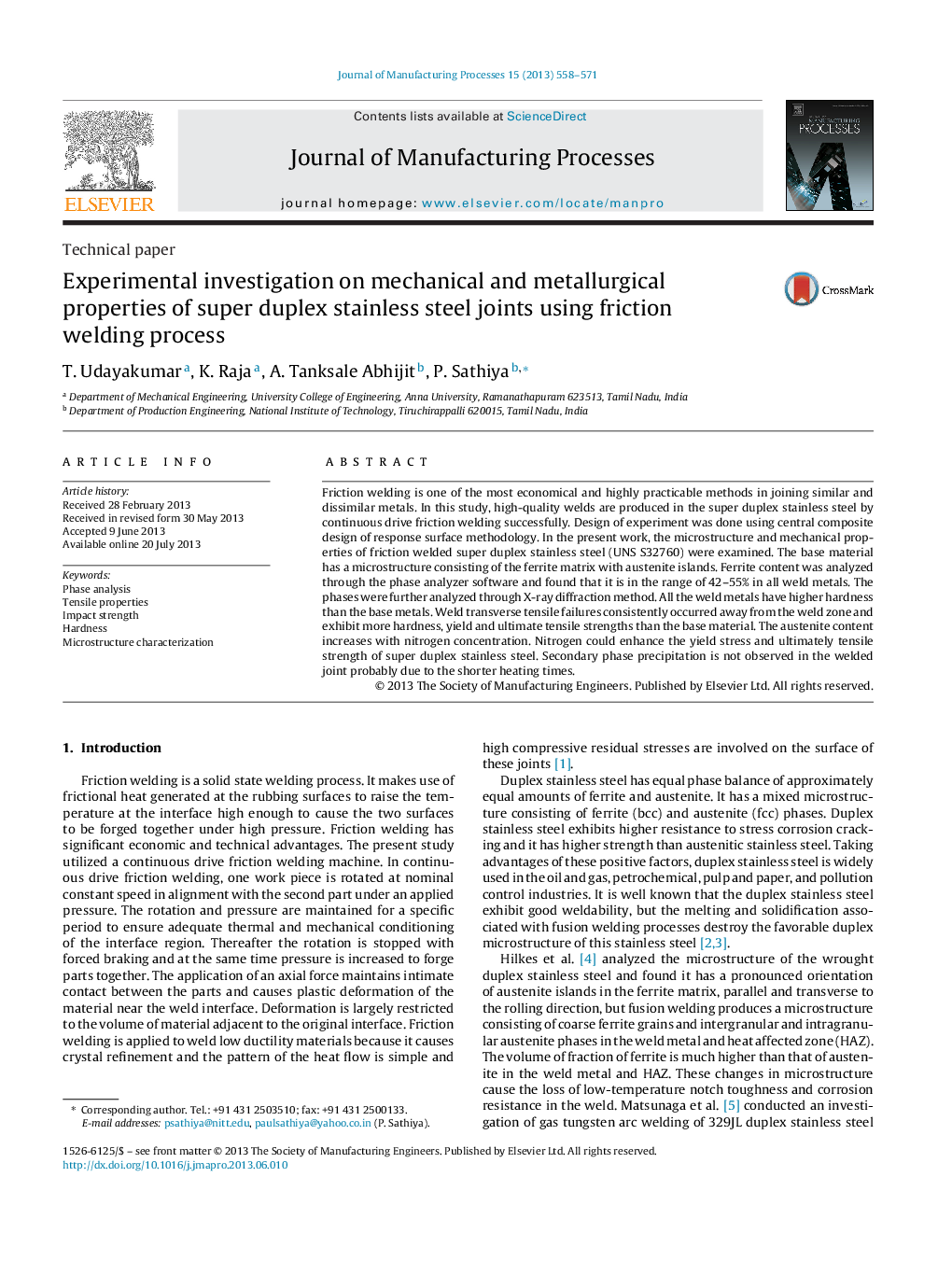| Article ID | Journal | Published Year | Pages | File Type |
|---|---|---|---|---|
| 1697032 | Journal of Manufacturing Processes | 2013 | 14 Pages |
Abstract
Friction welding is one of the most economical and highly practicable methods in joining similar and dissimilar metals. In this study, high-quality welds are produced in the super duplex stainless steel by continuous drive friction welding successfully. Design of experiment was done using central composite design of response surface methodology. In the present work, the microstructure and mechanical properties of friction welded super duplex stainless steel (UNS S32760) were examined. The base material has a microstructure consisting of the ferrite matrix with austenite islands. Ferrite content was analyzed through the phase analyzer software and found that it is in the range of 42-55% in all weld metals. The phases were further analyzed through X-ray diffraction method. All the weld metals have higher hardness than the base metals. Weld transverse tensile failures consistently occurred away from the weld zone and exhibit more hardness, yield and ultimate tensile strengths than the base material. The austenite content increases with nitrogen concentration. Nitrogen could enhance the yield stress and ultimately tensile strength of super duplex stainless steel. Secondary phase precipitation is not observed in the welded joint probably due to the shorter heating times.
Related Topics
Physical Sciences and Engineering
Engineering
Industrial and Manufacturing Engineering
Authors
T. Udayakumar, K. Raja, A. Tanksale Abhijit, P. Sathiya,
